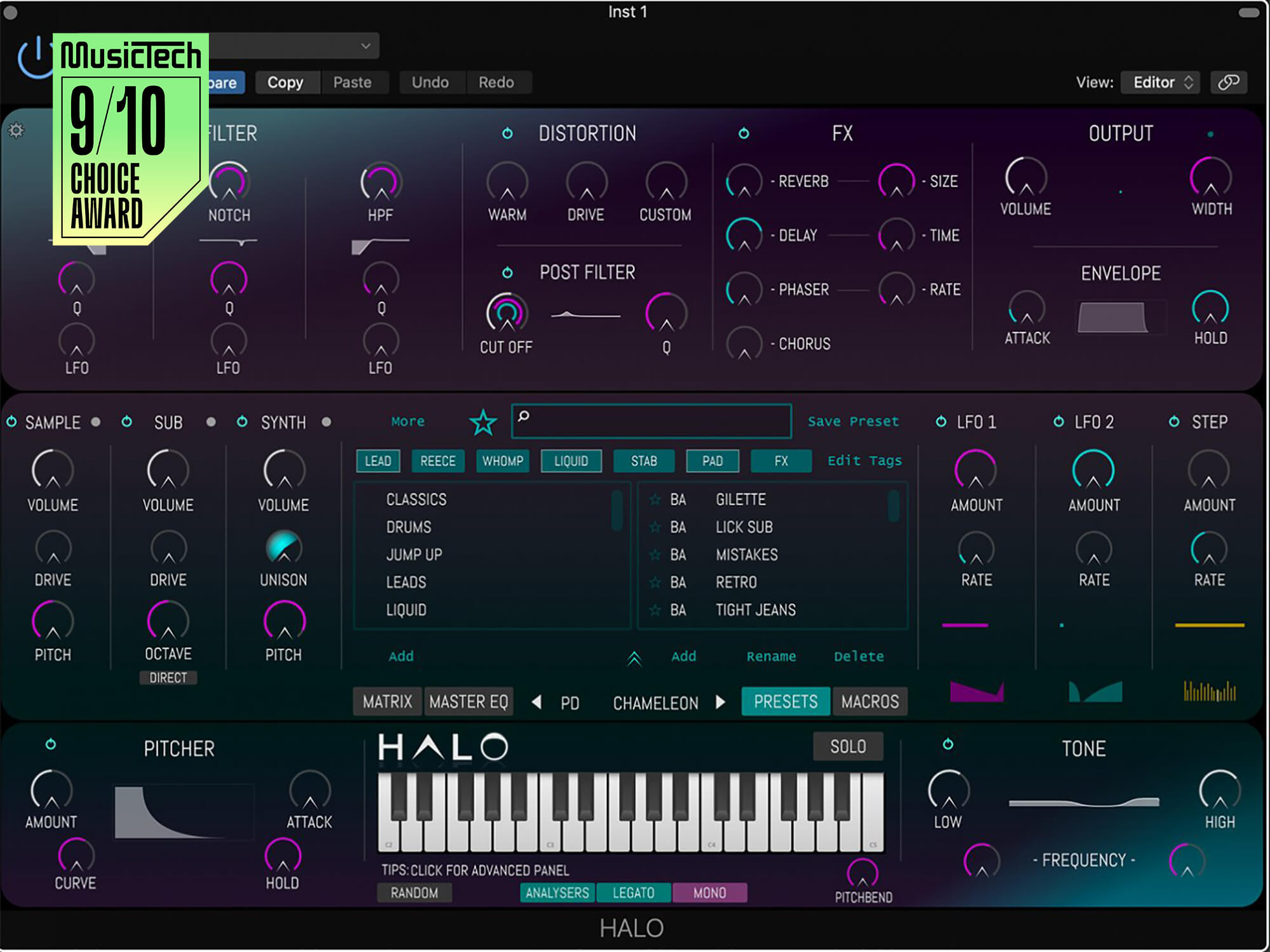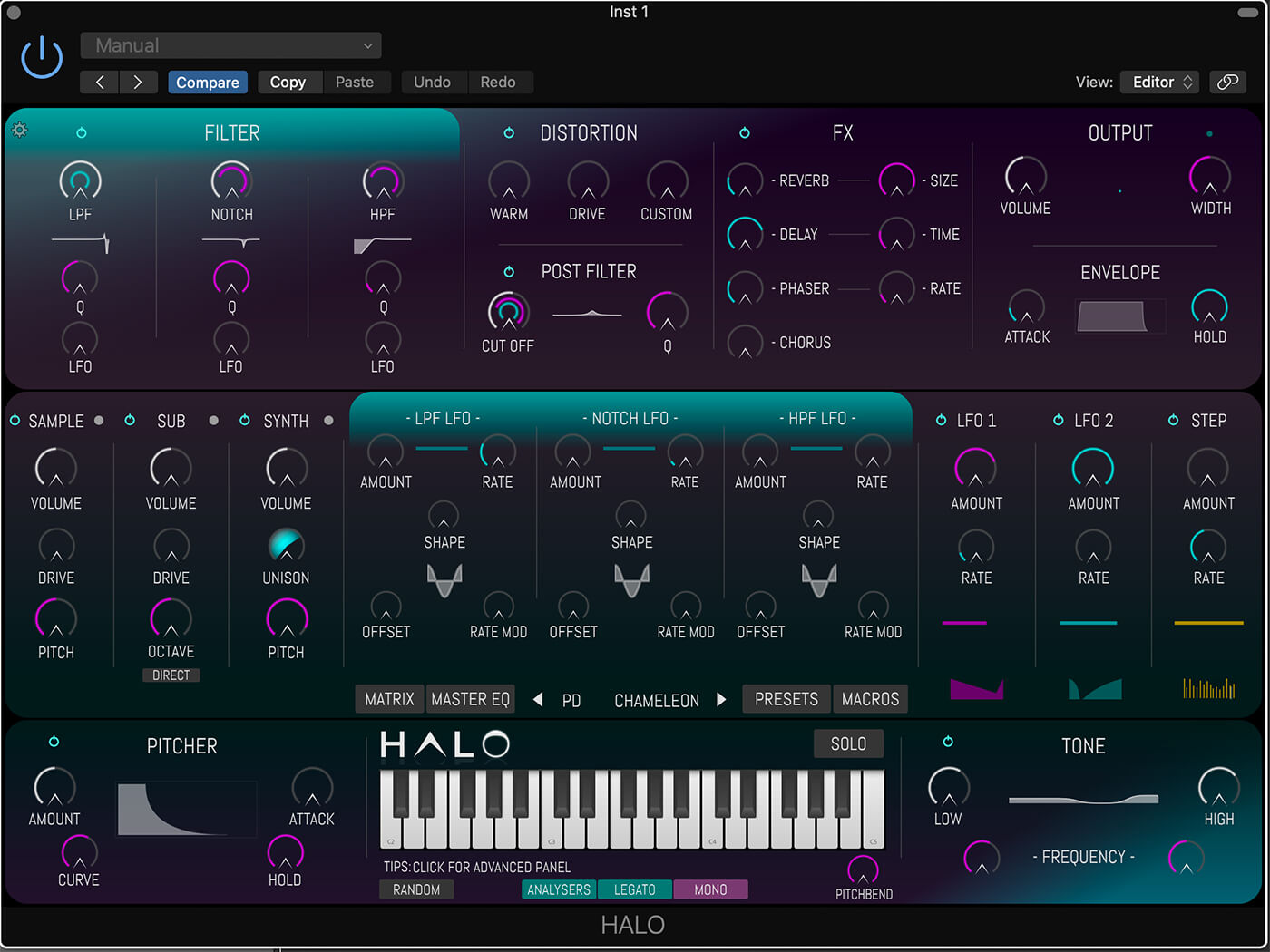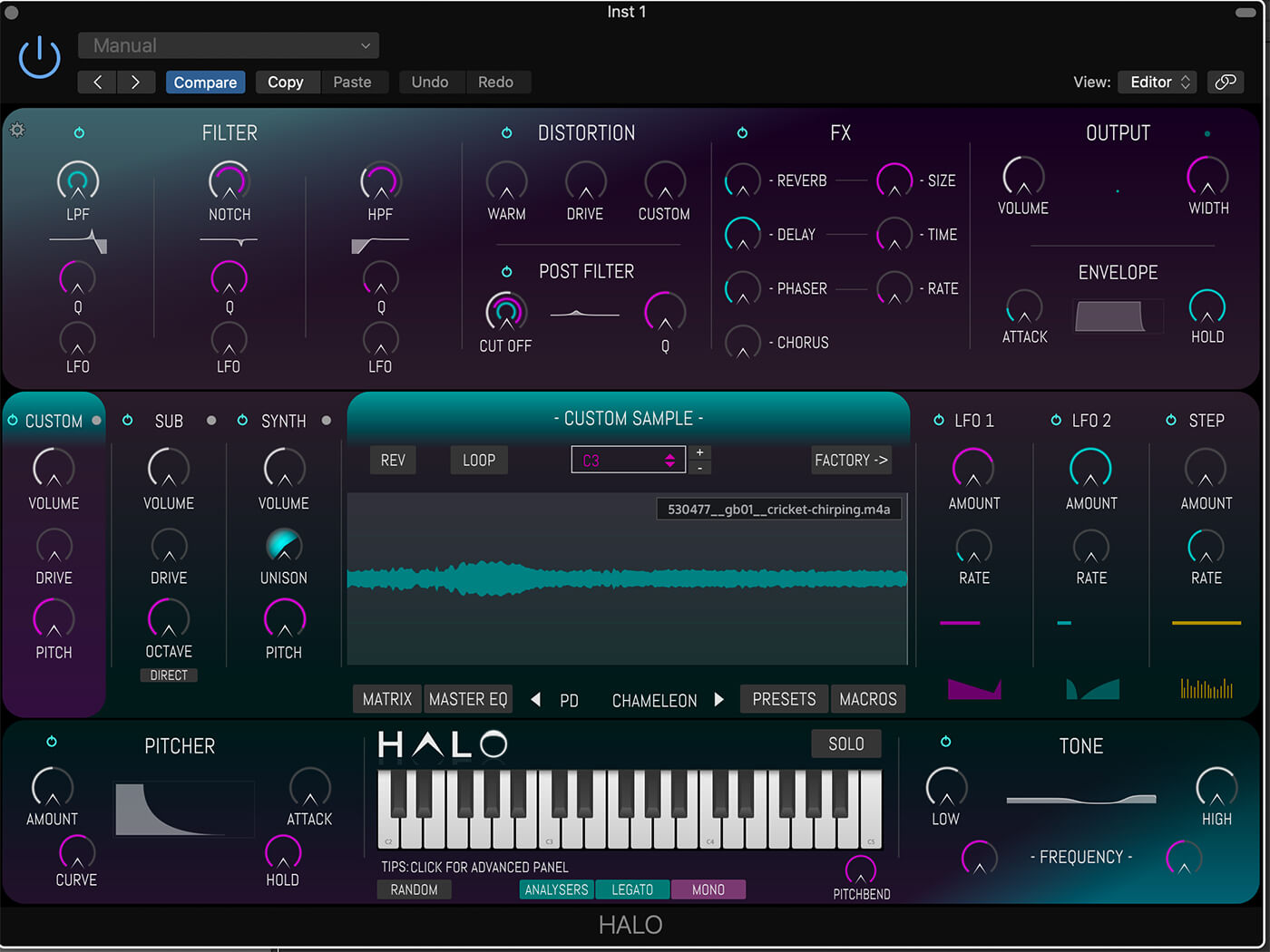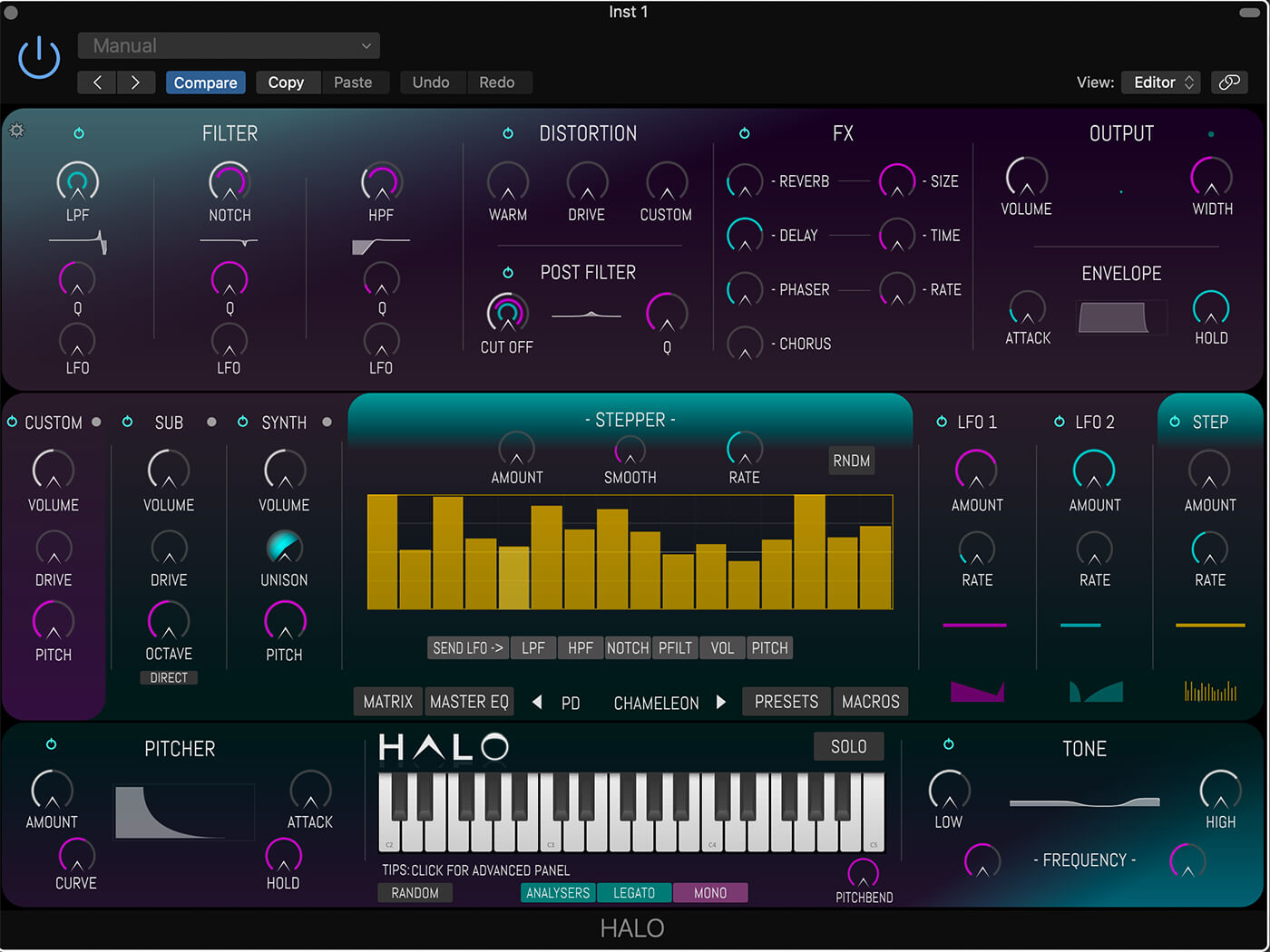Review: DC Breaks Halo
Electronic duo DC Breaks have entered the virtual instrument market with a drum and bass focused virtual instrument. Their hybrid synth and ROMpler, Halo, is less angel, more beast.

Review Overview
Our rating
9
Our verdict
⊕ Intuitive operation
⊕ Extremely powerful modulation sections
⊕ Practical effects and EQ sections
⊕ Sounds great
⊖ No control over filter resonance or slope
Halo is an all-in-one d’n’b sound design tool, and the sounds it makes for its target genre are exceptional. It’s perfectly possible to create entire tracks with this one instrument. It’s also a powerful hybrid synth and sampler that could be helpful to producers working in virtually any electronic genres.
Price £59
Contact DC Breaks
DC Breaks are best known as a drum and bass duo that have produced albums, remixes and headlined some of the biggest stages in the world. But they have also forged a career creating sample packs, loop packs and other musical tools. Their latest creation is a hybrid synthesizer, sampler and ROMpler plug-in dubbed Halo.
- READ MORE: Review: BLEASS Granulizer
Halo is available in VST and AU formats, so it’ll work in most DAWs quite happily, although Apple Silicon Macs aren’t yet supported via AU at the time of writing.
Installation is in two phases but extremely straightforward and quick. In the first phase, you install the plug-in, and in the second, the presets and samples are moved into the correct position.
Exploring the presets, it’s clear that Halo is made for a very distinct market. The sounds are all created by DC Breaks, harnessing their skills in drum and bass production. However, it’s easy to find suitable sounds among the hundreds of presets for other electronic genres. Specifically, the Liquid folder has some fabulous sounds that, with a little manipulation, could suit any need you might have.
The layout is pretty self-explanatory and has all the different sections visible on the main screen without diving through hidden layers. Most functions are visible all of the time, but there are deeper controls in the large central window, expanded by clicking section headers. For example, the filter section permanently shows cutoff frequency and Q size, but the detailed section gives you precise control of the filter modulation section.

Oscillators and filters
Among the oscillators, there are all the usual suspects: sine, triangle, saw and square. Helpfully, noise generators are available on both oscillators. (Why do soft synths often only put it on one?) But there is no pulse width modulation on either oscillator.
There are three filters available at all times, low-pass, high-pass and notch. These are powerful, with dedicated controls for cutoff frequency and bandwidth (Q), and each filter has its own LFO. These provide a wide range of sound design possibilities; having the LFO right there without any routing from the main LFOs means adding some wobble to your sound is super quick, intuitive and ideal for d’n’b.
The only negative is that’s there’s no easy way to adjust the filter slope, although DC Breaks say this might appear in a future update. Having a fixed slope is fine, but a variable slope would be useful for slightly more subtle filtering.
Modulation and effects
Where this instrument comes into its own is with its impressive modulation sections. The amount of flexibility here is incredible. On top of the dedicated filters LFOs, there are two other master LFOs and a step-sequencer. The master LFOs have a wide range of routing options, and routing is simple and intuitive.
In addition to the basic wave shapes, there’s a wide range of preset waveforms in the LFO section to choose from. The sound designers have included many modulation shapes to explore, all of which you can edit. There’s even a random button for finding more off-the-wall sounds. Then, if you find the perfect shape, you can save it into your own library.
As any experienced sound designer will tell you, a lot of sound design involves using effects to hone a sound. Halo is perfectly primed in that regard, offering a wide range of effects. The most important is the distortion section with three different distortion levels available to give sounds a little warmth, a bit of grit or full-on distortion.
Halo also includes a workable reverb and delay with plenty of control for the decay and mix amount, which are extremely useful for creating ambience on sounds.

The Sampler Section
The other key section of Halo is the sampler section. DC Breaks describe Halo as a hybrid synth and ROMpler – in that it can only playback samples, not record them. That’s cool – recording samples isn’t really what Halo is about.
DC Breaks have included a lot of samples expertly designed to complement the synth section. Unsurprisingly, these are aimed squarely at the primary market for this instrument. However, there are some nice extra touches – DC Breaks have included entire banks of d’n’b style kicks and snares. These are presented without extra synth layers, so you can process them with all the sound-shaping functionality of the instrument.
Loading samples is an intuitive and straightforward drag-and-drop process. And despite the focus on electronic music, Halo manages rather well when using weirder samples – we tried insect noises. The sampler section has course and fine tune sections, and by adjusting these and looping a small piece of the sample, we were able to craft a musically valuable sound.
Blending
Halo is a hybrid synth, and the power in a hybrid synth and sampler lies in the ability to blend those two functions. Halo does this brilliantly – the blend functions are easy to use, and finding complementary sounds is fast. Even with our cricket sample loaded, we could blend this with a sawtooth wave to create a soaring lead sound.
Halo is an extremely powerful instrument and has a wide range of sounds available within it. The ability to blend samples and synths to create sounds is not new, but Halo makes the process very easy, and the results sound fantastic. Halo does seem to be quite processor intensive, but for the sounds on offer, it’s worth it.

Key Features
- Wide range of oscillators
- Sample playback controls
- Individual filter LFOs
- Global modulation and step sequencer
- Flexible routing functions
- Wide range of effects